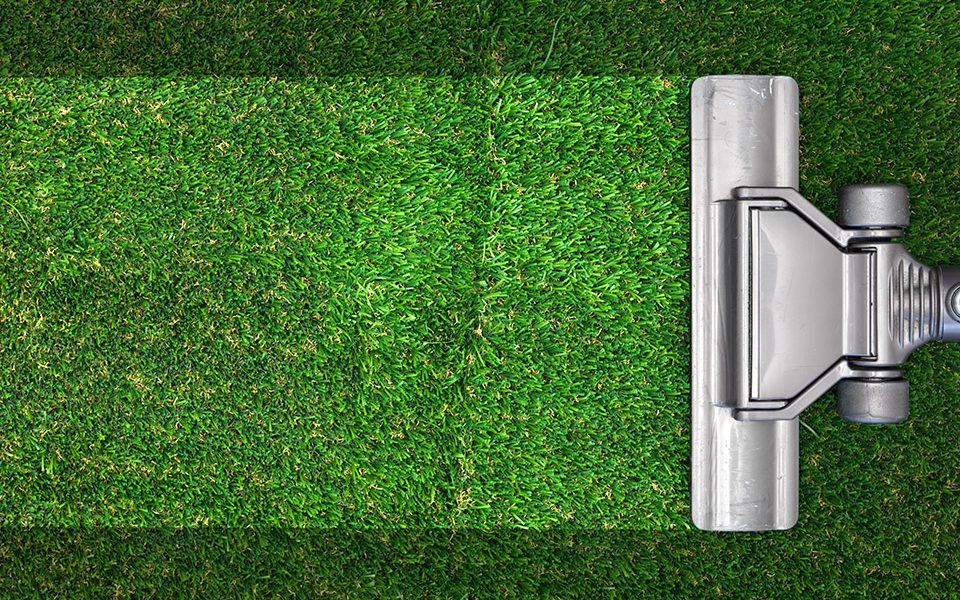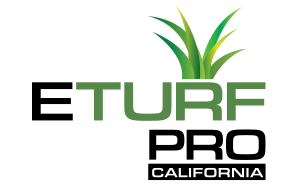Can You Vacuum Artificial Grass?
Although vacuuming your artificial lawn may seem like the quickest and easiest way to clean it and may even be an option in a pinch, it’s not recommended.
Artificial lawns are very durable, typically lasting between 12 and 15 years. They can withstand the most extreme weather conditions and heavy wear and tear. Furthermore, artificial turf is a low-maintenance landscaping choice. It enables you to enjoy the appearance and feel of natural grass without spending hours watering, mowing, fertilizing, aerating, edging, and performing other things regular maintenance tasks.
Although this is undoubtedly one of its most popular aspects, ornamental grass still needs some upkeep, much like other hard and soft landscaping elements in your yard. So, the common question is, “Can I vacuum synthetic turf?” No, is the answer.
Vacuuming synthetic grass is most fraught with two issues. The first risk is the suction can suck up your infill. The infill is a crucial component of your lawn, giving it the plush, bouncy feel reminiscent of natural grass.
The second issue is the potential for a strong vacuum’s suction to loosen synthetic turf, mainly if used frequently over time. It might result in shifting or drooping, which would require repair. In addition, if your vacuum is not made to clean damp surfaces, rain or condensation could damage it.
Artificial Turf: Common Issues and Concerns
An artificial lawn can get soiled and sustain structural damage, while natural grass is vulnerable to vitamin deficits and pests. The rigid threads of synthetic turf can become entrapped with debris, such as leaves, that fall on it. Moreover, the grass blades can collect dust, hair, and pet feces.
You can best achieve regular maintenance by giving your artificial grass a quick once-over with a stiff-bristled broom to restore it to peak condition. To stand the grass as upright as possible, it works best when brushed against the direction of the grass pile.
An electric or gasoline-powered brush could be helpful and much faster than a regular broom if you have a vast grassy area. Otherwise, keep your lawn clear of trash the rest of the time, and take advantage of the time you’ve saved.
How Do You Clean Synthetic Grass?
The best way to maintain the cleanliness of your artificial grass surface depends on what needs cleaning up. For instance, tidying up after your pet would be different from cleaning food and drink stains. Also, if you clean your ornamental grass with improper tools and substances, you risk aesthetic damage, functional damage to the drainage system, or maybe both.
Here are some pointers on how to maintain and clean your synthetic lawn:
Food and Liquid Spills
The broom and rinse combination will typically take care of the more frequent issues related to food or drink spills. Avoid using aggressive cleaning products or chemicals because they are unnecessary and risk bleaching or harming your synthetic lawn. For chewing gum, use a plastic putty knife or cool the gum with an ice cube to make removing it easier.
Sizable Debris
Branches, twigs, and other pieces of trash are easy to forget, and you should pick up and remove them, whether natural or artificial, from your lawn. It’s an excellent practice to get into because it can instantly improve the appearance of your garden.
Little Debris
The remedies range from a broom to a leaf blower since small-scale biological debris like leaves, seeds from adjacent trees, and other natural matter won’t just decompose and sink into the soil of synthetic grass. A greener artificial lawn and an easier-to-manage garden will result from keeping the grass clear of smaller waste pieces.
Snow and Ice
The best action when removing snow is to wait and let it melt. But be careful if you must clear the snow from your synthetic grass. You should avoid using metal tools such as Shovels since slamming a sharp-edged item onto your ornamental grass can damage it.
For clearing thick snow, use a shovel for the uppermost layers; use a stiff non-metal bristles broom for the remaining snow. A plastic snow shovel is the best option because, when used properly, it won’t harm the lawn. Also, since salt residue can accumulate and obstruct drainage, don’t use salt to avoid ice formation.
Pet Issues
While there may not be any fire hydrants, lamp poles, or other popular attractions in your garden that pets typically use as portable toilets, this doesn’t mean they won’t use your lovely new artificial lawn instead. While some pet owners provide their animals with an outdoor litter box made of specialized pebbles or a dirty area, not all pets are as cooperative.
But don’t fret! You may rapidly restore your synthetic lawn to its former glory in the following ways:
- You can use a strategically placed bag and scoop to easily manage solids, just like when responsible pet owners take their dogs for walks.
- It’s best to rinse the area with water after disposing of liquid waste to aid drainage and allow urine to sink from the surface into the sub-base beneath the lawn. This is crucial if you have numerous dogs or they frequent the same area. Before any special occasion, like a family barbecue or party, artificial turf experts advise giving any dog lawn an excellent rinse to eliminate urine from the surface of the lawn area, especially during the hot months.
Prevent Messes by Performing Regular Maintenance
Regular upkeep is the most straightforward approach to avoiding dirt, stains, and debris. Living plants and trees can occasionally lose twigs, leaves, and perhaps even fruits, which can add up over time. Regular sweeps with a sweeper or broom prevent a minor issue from growing more significantly.
So, synthetic turf still needs to be maintained and cared for even though it’s sturdy and durable. Vacuuming your artificial lawn may seem the simplest way to clean it, and in an emergency, it might be a workable alternative, but it’s not the suggested cleaning technique.
Consider getting assistance from a local professional specializing in artificial turf if your lawn needs much help. They will address your worries and offer service with maintenance and future care.



1 Comment